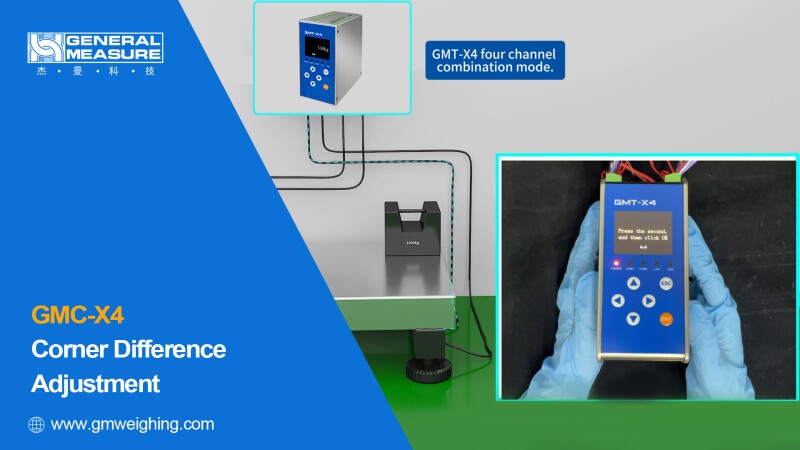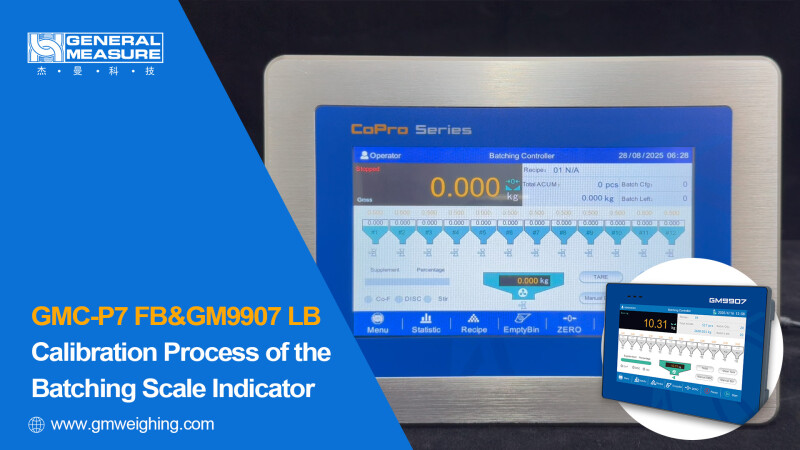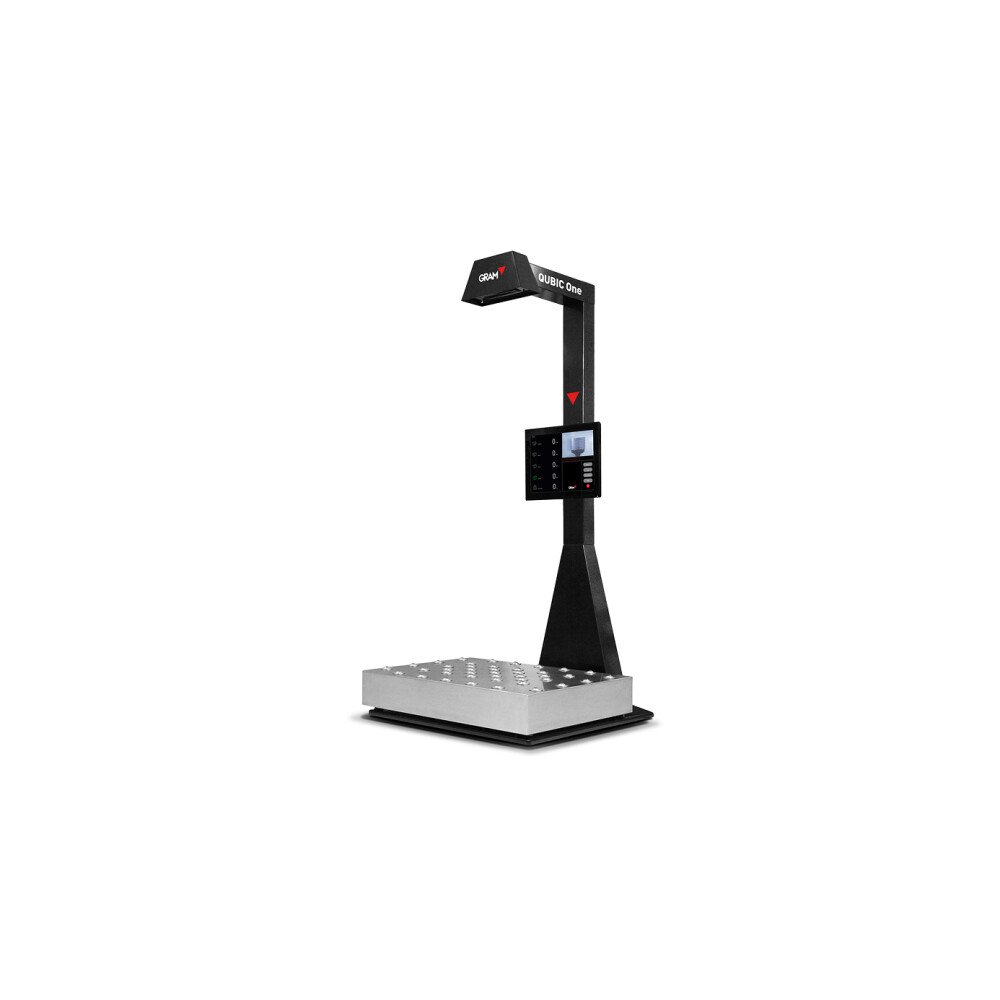Pennsylvania Scale Company (United States) - When customers know that they can depend on the repeatable quality of your products, they are much more likely to give you their future business. Consistent quality takes attention to detail and adherence to your quality management systems. This, in turn, allows for regular monitoring and determining whether your products meet the standards of your quality management system, regulatory requirements, and even food safety certifications. Quality control is an ongoing process that touches everything from purchasing to manufacturing to distribution, and very often a high-performance weighing or counting scale system is a critical component in this process.
Using scale data to reduce costs and increase profit:
A quality control scale is typically used to ensure that a product is being produced consistently at a set weight or at a set number of pieces. Products that are delivered underweight or below count can lead to customer complaints, expensive efforts to make the order right, potential legal or regulatory action, and risk to ISO, Guide 17025, or food safety certifications. Quite often, manufactures overfill to prevent underfill. While the goal of ensuring at or above product weight or count is admirable, this cautious approach comes at a cost.
Consider these two examples:
Example 1: peanut butter:
A jar of peanut butter has a stated package weight of 16 ounces. This company has not integrated a high-performance scale system into their quality control program, and as a result, they fill to 17 ounces, 1 ounce over the stated package weight to ensure they are not underweight. What is the cost of this overfill?
Conversely, a high-accuracy, high-precision scale integrated into the manufacturer’s quality control system would allow the manufacturer to consistently and dependably deliver exactly 16 ounces in every jar without overfill. The losses noted in the chart then become savings—savings that quickly pay back the scale investment and start producing ROI.
Example 2: fasteners:
A hardware manufacturer produces a package of fasteners that contain 1,000 pieces. Due to an inaccurate, low-performance scale system, each pack is overfilled with 1,001 pieces. What is the cost of that one extra piece?
Again, a high-accuracy, high-precision scale integrated into the quality control system would allow the manufacturer to consistently deliver exactly 1,000 pieces in each pack without overfill, and the losses become savings.
Quality control is about making a product to a high-quality standard, but it’s also an important component of reducing costs and boosting profitability.
Integrating a high-performance counting scale or weighing scale into your quality control process can reduce costs and provide an extremely fast return on investment.
More Info
Source Link
See Articles by Tag
3Is Technologies
AD Weighing
ADCompany
ADEUNIS RF
AGROPRODMASH
AISTech
ANTEC
ARABLAB
ATEX
Accessories
Accreditation
AchemAsia
Acquisition
Advertising
Ag Weigh
Agent
Agreement
AgriTech
Agritechnica
Aircraft Scales
Alibi Memory
Alimentaria Brazil
AllPack
Amazon
Amplifiers
Amy Young
Analitica Latin America
Analytical Balances
Android Smartphones
Animal Scales
Anniversary
Annual Coal Processing Exhibition and Conference
Approvals
Apps
Argentina
Articles
Artificial Intelligence
Australia
Austria
Automated Weigh Stations
Automated Weighing Technology
Automatic Weighing
Automation
Automation Fair
Automation Inside
Automation Inside Awards
Avogadro
Awards
Axial Load Cell
Axle Weighbridge
Axle Weighing
Azerbaijan
BICES
BLH NOBEL
BMI
Baby Scales
Bag Filler
Bag Fillers
Baggage Scales
Balances
Barcode Readers
Batch Weighing
Batching Scales
Batching Systems
Bathroom Scales
Battery
Bauma
Beam Scales
Bed Scales
Belgium
Belt Scales
Belt Weighers
Belt Weighing
Bench Scales
Benelux
Benin
Betting
Bikes
Bin Identification
Bin Scales
Bin Weighing
Blending Systems
Bluetooth
Bluetooth Scale
Body Analysis Scales
Body Scales
Book
Boxes
Brazil
Breakbulk
Breakbulk Americas
Breakbulk Europe
Breakbulk India
Breakbulk Turkey
Brochure
Brochures
Bulgaria
Bulk Weigher
Bulk Weighing Scales
CANopen
CAT Scale Company
CBI India & South Asia
CECIP
CFM
CIM Exhibition
Cable Scales
Cables
Caldwell
Calibration
Calibration Presses
Calibration Services
Cambridge Scale Works
Cameras
Campaigns
Canada
Case Studies
Cases
Casino
Catalogues
Catchweighers
CeMAT
Cement Business & Industry
Cemtech Europe
Cemweek
Central City Scales
Central Weighing
Cereals
Certification
Certification Services
Certifications
Chair Scales
Chapter 41
Checkeighers
Checkout Scales
Checkweighers
Chem-Med
Chile
China
Cloud
Club Industry Show Conference
Coal Prep
Coaltrans
Coaltrans Asia
Coaltrans Emerging Asian Coal Markets
Coil Scales
Cold Planner Scales
Colombia
Communication Modules
Compact Balances
Compact Scales
Company News
Competition
Components
ConExpo-Con-Agg
Concrete Weighbridge
Conferences
Container Weighing
Contracts
Controllers
Converters
Conveying System
Conveyor Scales
Cook Islands
Cooling Systems
Corporate Video
Counting Scales
Course
Crane Scales
Creative Microsystems
Croatia
Cubing System
Cutters
Cylinder Cart Scales
Cylinder Scales
Czech Republic
DanFish International
Data Integration
Data Logger
Data Recorders
Denmark
Density Measurement Scales
Devicenet
Digital Scales
Digitizer
Digitizers
Dimensioning System
Dimensioning Weighing System
Directory
Discounts
Dispensing Systems
Displays
Distribution
Donations
Dosing
Dosing System
Dosing Systems
Download
Downloads
Dubai
Dynamic Rigging Hire
Dynamic Weighing
Dynamometers
EAC
EC
EMFC
EMPACK Brussels
ERP
EXPOSOLIDOS
Ecomondo
Egypt
Electronic Overload Guard
Electronic Overload Switches
Elektrotechniek
Email
Enclosures
Enova
Erbil International Fair
Ethernet
Eurasia Packaging
European Biomass Conference and Exhibition
Euroshop
Events
Excavator Scales
Expansion
FDA
FM
FM Approval
FMI Connect
FMus+candIECEx
FUTEK Webinar
Facebook
FachPack
Farm Truck Scales
Feedback
Feeders
Feeding Systems
Fiber Optic Load Cells
FiberSensing
Fieldbus
Fillers
Filling
Filling System
Filling Systems
Financing Services
Fine-Spect
Finland
Fitness Scale
Fitness Scales
Floor Scales
Flyer
Food Automation and Manufacturing Conference and Expo
Food Scales
FoodPro
FoodTec
Force Measurement
Force Sensor
Force Sensors
Force Transducers
Forklift Scale
Forklift Scales
Formula Scales
Formulation
Formulation Software
France
Fruit Scales
GMI
GPRS
Gambling
Games
Gaming
Gas Cabinet Scale
Gas Scales
Gastro-Scales
Gaylin
General Manager
Germany
Ghana
Giveaway
Good Design Award
GraTec
Graders
Grading System
Grading Systems
Grain Weighing
Gravimetric Feeders
Greece
Growth
Guest Articles
Guest Post
Guest Posts
Guide
Guides
Gulfood
HACCP
HMI
Handheld Pressure Calibrator
Handheld Weighing Indicator
Hanging Scales
Hannover Messe
Haver And Boecker
Headquarters
Health Scale
Health Scales
Helicopter Scales
Hillhead
Hoist Scales
Hong Kong
Hoper Scales
Hopper Scales
Horeca Life
Horse Scales
Horse Weigh
Hungary
Hydraulic Truck Scale
IAOM
IBIE
IBM
IECEx
IFFA
IIoT
INDIA STEEL
INHORGENTA
INTERPHEX USA
IP Protection
IPPE
ISO
ISWM
Iceland
Identification Systems
In-motion Weighing
India
Indicators
Indonesia
Industrial Computers
Industrial PCs
Industrial Scales
Ingredient Scales
Innovations
Inspection System
Inspection Systems
Installation
Intake Scales
Integrations
InterWeighing
Intermodal South America
International Baking Industry Exposition
International Iron Ore Symposium
International Metrology Congress
International Production Processing Expo
International Star Award For Quality
Internet
Interpack
Intertraffic
Intertraffic Amsterdam
Interviews
Intralogistics
Investment
IoT
Iran
Ireland
Israel
Istanbul Food-Tech
Italy
Jackson Aircraft Weighing Service
Japan
Jawbone
Jobs
Jordan
Junction Box
Kazakhstan
Keg Scales
Kenya
Kilogram
Kiosk
Kitchen Scales
LAMMA
LED Displays
LEDiT
LGC Automation
LTS Scale
LabAsia
Labeling System
Labelling
Laboratory Balances
Laboratory Scales
Lean Six Sigma
Legal For Trade
Lenger
Lifting Gear Hire
Lifting Systems
Linear Weighing
LinkedIn
Liquids Weighing
Lithuania
Livestock Scales
Load Cells
Load Bar Scales
Load Cell
Load Cell Accessories
Load Cell Amplifiers
Load Cell Conditioner
Load Cell Converter
Load Cell Indicators
Load Cell Monitoring
Load Cell Telemetry
Load Cell Tester
Load Cell Transmitter
Load Cells
Load Cells Protection
Load Cells Tester
Load Limiters
Load Links
Load Measurement
Load Monitoring
Load Pins
Load Pins Amplifiers
Load Sensor
Load Sensors
Load Shackles
Load Testing
Loadrite Scales
LogiMAT
Logistics
Loss-in-Weight Feeders
Lottery
Low Profile Load Cells
Luggage Scales
Luggage Weighing Indicators
Luxembourg
MATS
MES
MHEA Bulk Handling Conference
Mail Scales
Maintenance
Malaysia
Management
Manager
Manuals
Marine Scales
Marketing
Marketing Manager
Marketplace
Marking Systems
Mass Comparators
Mass Flow Meter
Masses
Measurement Control Show
Measurement Systems
MeatUp
Mechanical Overload Switches
Mechanical Scales
MedTrade
Medica
Medical Body Composition Analyzer
Medical Scales
Medical Weight Analyzer
Memory
Merger
MesurExpo Vision
Metal Detection
Metrology
Mexico
Micro Balances
Mid-America Trucking Show
Miniature Sensors
Minibea
Mining Scales
MiningWorld
Mixing System
Mobile Weighbridges
Mobile Weighing
Modbus-TCP
Moisture Analyzers
Moisture Balances
Moldova
Monitoring
Mounting Box
Mounting Kit
Mozambique
Multi-Axis Sensors
Multifunctional Scales
Multihead Weigher
Multihead Weighers
Museum
NAWI
NCSL
NCWM
NEC
NTEP
National Conference of Standards Laboratories
Netherlands
New Zealand
Nextgen
Nike
NikeFuel
North Africa
Norway
Nutrition Scales
OIML
OPC UA
Offers
On-Board Weighing Systems
On-board Weighing Scales
Online Software
Online Store
Open Source
Order
Orders
Out-Loading Scales
Overload Sensor
PAWRS
PBE The Powder Show
PDA
PLANTWORX
PLC
POS
POST-EXPO
POWER-GEN Europe
POWER-GEN India and Central Asia 2013
PROFINET
PTB Approval
PTX
PTX Canada
PacTec
Pack Expo
Packaging
Packaging Machine
Packaging Machines
Packaging System
Packaging Systems
Pallet Dimensioning System
Pallet Truck Weighing Scales
Pallet Weighing
Pancake Load Cells
PanelPC
Paper
Parcel Scale
Partnership
Partnerships
Patent
Pedal Load Cells
Personal Body Scales
Personal Scales
Peru
Petfood Forum USA
Philippines
Photo Capture
PlasTec
Plast Alger
Plast Expo
Platform Scales
Pocket Programs
Poland
Portable Scales
Portable Weighing System
Portable weighbridge
Portion Scales
Portugal
Post Scale
Postal Scales
Powder And Bulk Solids India
Powder Bulk Solids
Power Banks
Power Supplies
Powtech
Precisa
Precision Balances
Precision Scales
Press Relases
Press Release
Press Releases
Presss Releases
Price Computing Scales
Price Labeling
Price Labelling
Printers
Prize
Product News
Production Facilities
Produtct News
Profibus
Profibus-DP
Qatar
Quality Control
Quiz
RAILTEX
RF Scale
RFID
RID Logistics Solutions
RS-232
RS-485
RWM
Racing Scales
Radioactive Sensors
Rail Weighbridge
Rail Weighing
Reactor Weighing
Rebranding
Recorders
Relay Module
Remote Displays
Rental Services
Repair Services
Repeaters
Report
Representation
Research Xchange Forum
Research and Development
Results
Retail Scales
Riga Food
Robotgrader
Robotics
Robots
Rockwell Automation
Rocky Mountain Scale Works
Romania
Rope Sling Specialists
Rotor Scales
Rotor Weigh Feeders
Rugged Controls
Runtastic
Russia
S-Beam Load Cells
SAP
SEO
SGS Weighing Automation
SIRHA
SQL Database
Sage
Sales
Sales Manager
Samples
Sartorius Intec
Saudi Agriculture
Saudi Arabia
Sauren Investment Group
Scale
Scale Components
Scale Controllers
Scales
Scales Accessories
Scannning System
Scanpack
Schneider Electric
Seafood Exposition
Seafood Processing
Search Engines
Self-Service Kiosks
Self-Service Scales
Sell
Sensor Test
Sensors
Sensors Expo Conference
Sensors Instrumentation
Serbia
Services
Shear Beam
Shelf Scales
Shipping Container Weighing Scales
Shipping Scales
Silent Block
Silo Weighing
Simionato
Simulators
Singapore
Skala Foodtech
Slicers
Slots
Slovakia
Slovenia
Smart Scales
Smartphone
Social Media
Soehnle
Software
Software and Automation
Solar Scales
Sorting Machine
South Africa
South Africa
South America
South Korea
Spain
Spill Containment Scales
Sponsor
Sponsorship
Spotlight Products
Spring Scales
Sri Lanka
Standard Reference Transducers
Standards
StocExpo
Storage
Strain Gages
Strain Gauge
Strain Gauge Amplifier
Strain Gauge Converter
Strain Gauges
Strain Measurement Devices
Strain Sensors
Strain Systems
Stretcher Scales
Submersible Load Cells
Summing Box
Suppliers
Support Services
Survey
Susceptometers
Sweden
Switzerlad
Switzerland
TENSO-M
TIPREX
TOC Container Supply Chain Europe
TV Show
Table Top Scales
Tablet
Taiwan
Tajikistan
Tanaka Scale
Tank Storage Asia
Tank Weighing
Technical Articles
Temo Pese
Tension Link Scales
Terminals
Test Weights
Testimonial
Testing
Testing Laboratory
Testing Systems
Thailand
The Total Processing & Packaging Exhibition
Thermal Printer
Tokyo Sokki
Ton Cylinder Scales
Touchless Scales
Train Scales
Train Weighbridge
Train Weighing System
Training
Training Services
Transducer
Transmitters
Transportable Weighbridges
Truck Scale
Truck Scales
Turkey
Tutorials
Twitter
TÇMB
UK
UKAS
UKCA
UL Recognized Component
USA
USB
USP
Uganda
Ukraine
Ultra-Micro Balances
Unattended Weighing
United Arab Emirates
Unloading Systems
Unmanned Weighbridge
Upgrades
Used Equipment
VCAP
Vacuum Weighing Systems
Variohm Eurosensor
Vegetable Scales
Vehicle Recognition System
Vehicle Scales
Vehicle Weighing Solutions
Vehicle Weighing Systems
Verification Services
Veritasium
Vessel Weighing
Veterinary Scales
Vetta Macchi
Vibrating Feeders
Video
Video Recording
Videos
Vietnam
Vision Systems
Visual Inspection
Volumetric Feeders
Volumetric Measurement
Volumetric Weight Calculators
Warranty
Washdown Scales
Washers
WasteTech
Waterproof
Watt Balance
Webinar
Website
Weigh Beams
Weigh Belt Feeder
Weigh Cell
Weigh Fillers
Weigh Module
Weigh Price Labeling
Weigh Stations
Weigh-in-Motion
Weighbridge
Weighbridge Software
Weighbridges
Weighers
Weighfeeder
Weighing
Weighing Accessories
Weighing App
Weighing Beam
Weighing Bridge
Weighing Cells
Weighing Controller
Weighing Controllers
Weighing Data
Weighing Environment Logger
Weighing Expo
Weighing Hooks
Weighing Indicator
Weighing Indicators
Weighing Indicatos
Weighing Instrumentation
Weighing Kit
Weighing Module
Weighing Platform
Weighing Review
Weighing Review Awards
Weighing Review Marketplace
Weighing Scales
Weighing Sensors
Weighing Services
Weighing Software
Weighing Solutions
Weighing System
Weighing System Tester
Weighing Systems
Weighing Terminals
Weighing Transmitter
Weighing Transmitters
Weighing Trasmitter
WeighingIndicators
Weight Controller
Weight Controllers
Weight Meter
Weight Processor
Weight Transmitter
Weight Transmitters
Weight-in-Motion
Weightru
Weights
Wheel Load Scales
Wheel Loader Scale
Wheel Loader Scales
Wheel Scale
Wheel Weighing
Wheelbarrow Weighing
Wheelchair Scales
White Paper
Wireless
Wireless Charging
Wireless Load Cells
Wireless Scale
Workshop
World AG EXPO
World of Concrete
Wrappers
X-Ray Inspection
Youtube
Zambia
ebec
i.co interims consulting
iPad
iPhone Smartphones
prod

































